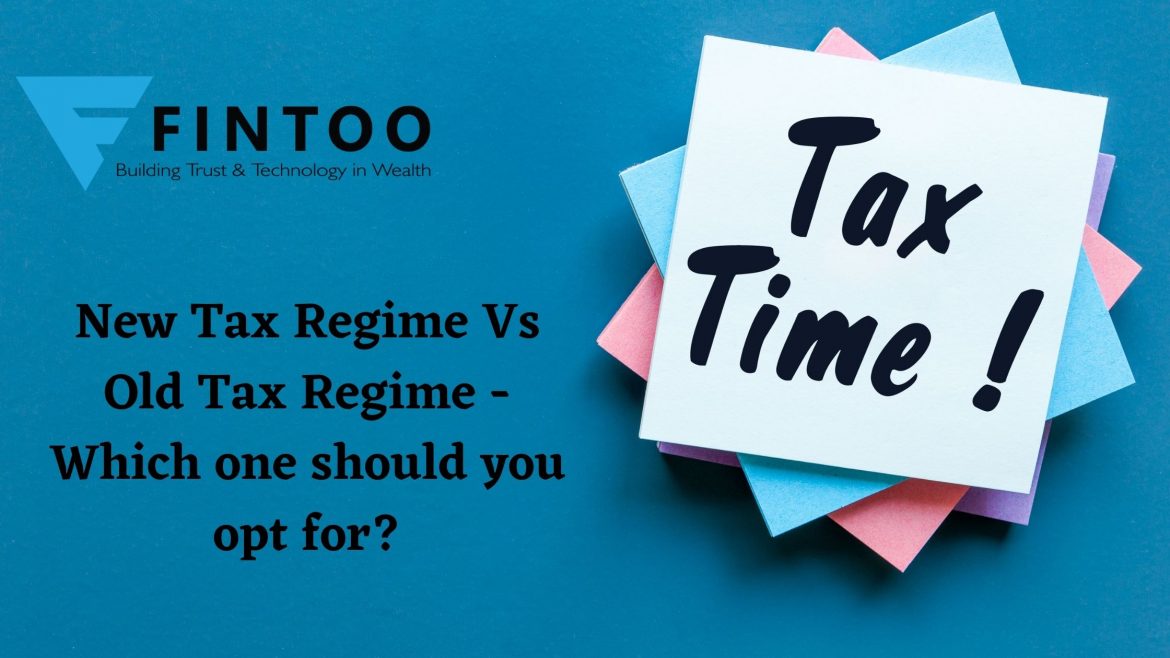

In the Union Fiscal Budget 2020 unveiled by the FM, Nirmala Sitharaman announced a new and simplified income tax regime with revised income tax slabs and tax rates. This new tax system is optional to the taxpayers and it is not mandatory to opt for a new tax regime. To put it simply, the assessee can either choose the New Tax Regime or continue to follow the Old Tax Regime depending on what is best suitable from a tax planning point of view. As we have entered into the new Financial year 2020-21, it is important that we start planning for our taxes now. But this year, the first step in your tax planning would be to decide whether to go with the old tax regime or new one.
It is not very straightforward to decide and there are many things which you need to consider while making this decision. So let us start by understanding the change in slab rates in the following table:-
As you can see in the above table, the New Tax Regime has proposed lower income-tax rates, for income slabs up to Rs 15 lakh but the catch here is that the option for such a concessional tax regime requires the taxpayer to forego around 70 specified exemptions and deductions. Some of the major ones which are availed by most taxpayers include: –
- Standard deduction of Rs 50,000
- House Rent Allowance
- Leave Travel Allowance
- Deduction under section 80C of Rs 1.5 lakh which includes ELSS, PPF, life insurance premium, repayment of principal of housing loan etc..
- Interest paid on self-occupied property of Rs 2 lakh
- Health Insurance premium
- Interest paid on Education loan
So now the question arises, how does one actually choose which regime is better? To understand the implications of opting for either of the options, let us now look at the pros and cons of both tax regimes.
Pros of the new tax regime:
- Enhanced Liquidity: With more disposable income in the hands of the taxpayer due to lower income tax rates, assessees who could not invest in specified instruments due to certain financial or other personal reasons can now do so.
- Reduced documentation: As most of the exemptions and deductions are not available, the documentation required is lesser and the tax filing is easier.
- Flexibility in investments: The new regime provides taxpayers with a flexibility of customising their investment choices as per their wish. As earlier one was required to invest in certain prescribed investments only, to avail tax benefits.
- Some Exemptions are still allowed: There are few exemptions that are available in the new tax regime. Income from life insurance policies, retirement benefits, employer contribution to NPS under 80CCD(2) and Section 80JJAA [i.e. for new employment] are some which can be claimed.
Cons of the new tax regime:
Forgoing the Deductions: There is one but it is the biggest disadvantage to let go of almost all the exemptions such as Leave Travel Allowance (LTA), House Rent Allowance (HRA) etc and deductions available under chapter VI A of the Act that grant deductions under Section 80 such as 80C, 80CCC, 80CCD, 80D, 80DD, 80E, 80EE, 80G, 80GG, 80GGA, 80GGC, etc.
Pros of the Old System:
The old system inculcates a good saving system by enforcing investments in certain tax-saving investments. If individuals are left on their own to invest, they are most likely to not to do it. So the old tax regime provides a disciplined approach in investing by providing tax benefits on some investments. These investments provide for long term goals of an individual like retirement, children marriage and higher education.
Cons of the old system:
- Less Liquidity: In order to reduce tax outflow, taxpayers invest in certain investments to avail the maximum deduction which in certain cases leaves them with less liquidity which discourages.
- More Documentation: With the need to submit investment proofs to claim deductions, a taxpayer has to file a lot of documents which takes away some of your time.
- No Flexibility in investments: Even if the investor wants to invest in funds which are performing better, the investor can not, and has to invest in funds which are mostly risk-averse in nature and may not provide significant returns over the period of investments
Now that we have seen advantages and disadvantages of each option, let’s take a step ahead to see some calculations. Below table shows the minimum deduction amount to claim in old tax regime to make it a better option than new tax regime.
Let me explain one of the examples from the table. If a person earns 10 lacs of income and if he manages to claim a deduction of Rs.1.87 lakhs or more, then the old tax regime will be beneficial for him. But if he can claim a deduction of an amount less than 1.87 lakhs then the new tax regime will be beneficial. By looking at these figures, in most of the cases, old tax regime will be beneficial as people are able to claim this level of deductions
To conclude, I would like to say that in order to decide which option is better for you, calculate your tax outflow according to both the options and go for the one which has the least amount of tax. Also, keep in mind the pros and cons that we have discussed to make an informed decision.
A financial planning platform where you can plan all your goals, cash flows, expenses management, etc., which provides you advisory on the go. Unbiased and with uttermost data security, create your Financial Planning without any cost on: http://bit.ly/Robo-Fintoo
To Invest and keep regular track of your portfolio download: Fintoo App Android http://bit.ly/2TPeIgX / Fintoo App iOS http://apple.co/2Nt75LP‘
Disclaimer: The views shared in blogs are based on personal opinion and does not endorse the company’s views. Investment is a subject matter of solicitation and one should consult a Financial Adviser before making any investment using the app. Making an investment using the app is the sole decision of the investor and the company or any of its communication cannot be held responsible for it.
Related Posts
Stay up-to-date with the latest information.


